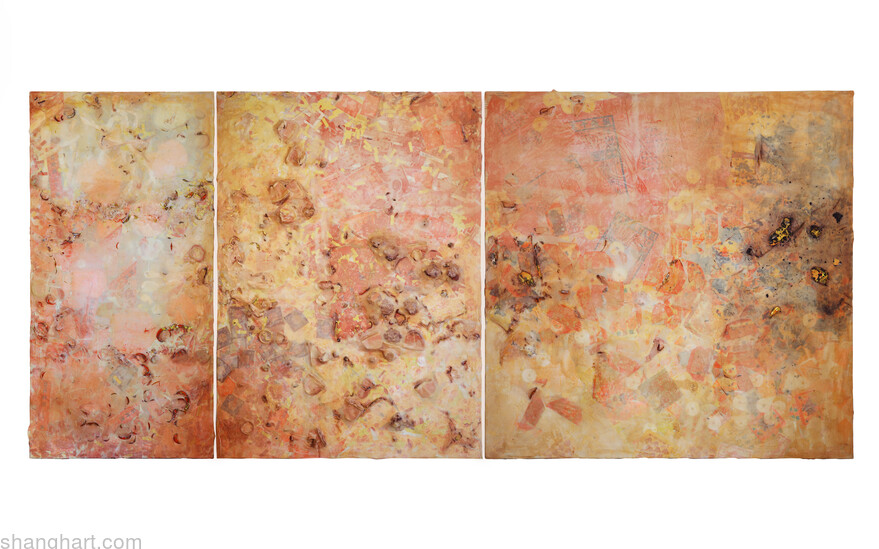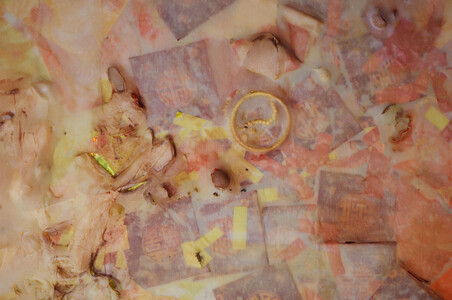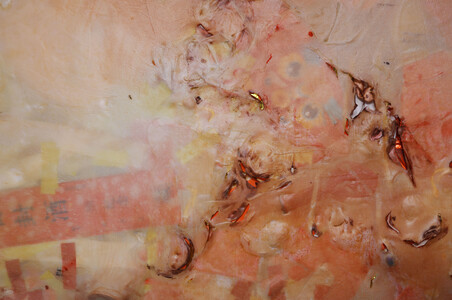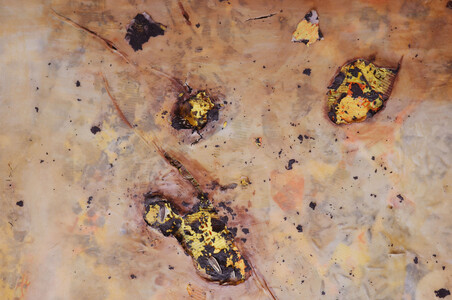The rituals of “decency culture” are performative acts through which individuals maintain, transform, or reinforce their social identity in public settings. Among these, the three most significant rituals a person may experience in a lifetime are the weaning banquet (or, in some cases, a baptism or full-month celebration), the wedding, and the funeral. This triptych corresponds directly to these three major ceremonies. As the visual scale of the triptych expands across the panels, the rituals appear increasingly detached from the individual, becoming more about that person’s social relationships than about the individual themselves.
Beneath a surface resembling burned skin, the ceremonial props used in these three rituals reveal striking visual and symbolic similarities. The longevity lock of the weaning banquet, the gold jewelry of the wedding, and the gold foil ingots of the funeral form a continuum of golden elements. The red envelopes of the weaning banquet, the betrothal gifts of the wedding, and the joss paper of the funeral parallel one another as forms of monetary exchange. Similarly, the red-dyed egg, the peanuts and longan, and the sunflower seeds offered at the funeral constitute a shared vocabulary of ritual foods. These recurring performative objects, when considered together, seem to reveal an underlying sameness in the essence of these rituals of “decency culture.”
Detail pictures:





